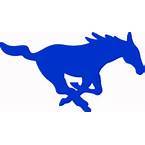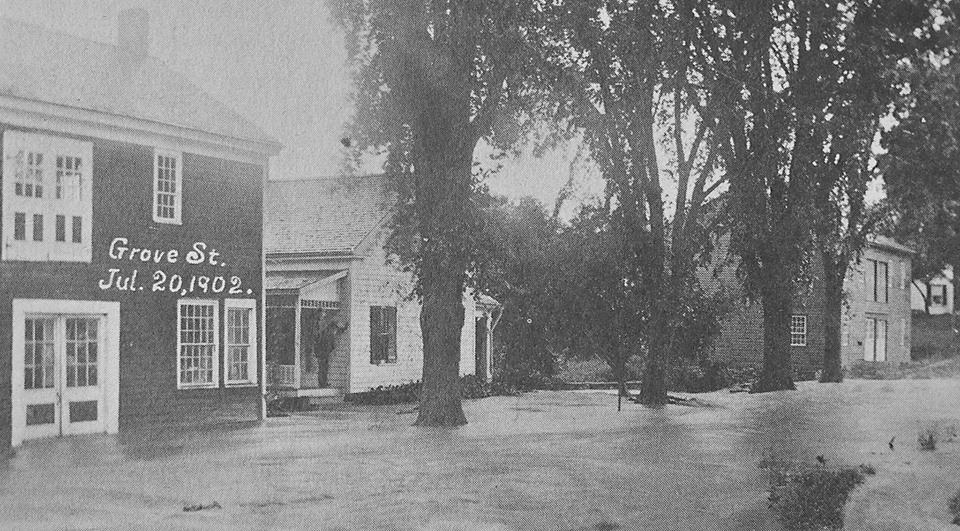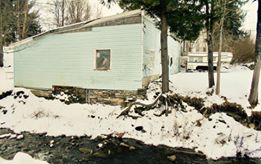
You are here
1902 Grove St

Photos and comments courtesy of Rene Elliott and Janet Washbon.
James E. Cooke had the tavern rebuilt 1883 and the theatre/ballroom added upstairs, about the end of a building boom in Morris for a few decades when the Otsego Silver Mining Co. failed, the Moore & Co. bank invested in silver failed, the textile mills failed, and then the big Sept. 1883 fire. No railroad, cheese making was next biggest thing in the 1890s when silos allowed for better dairy production. J.P. Kenyon even offered free use of his shops on Grove St. (see 1902 flood picture below) for a year in 1895 just to get someone to start a business here and create jobs, and that only took two decades, although at some point someone did make roller skate wheels in the machine shop prior to Linn coming along and renting it. they actually had a roller skating rink upstairs in the building with a stairway on the end next to the hillside. So people with machining/blacksmith/carpentry skills were leaving Morris for Oneonta D&HRR shops, or Hartwick when the trolley that was prevented from running through this valley was built over there. But at least by then railroads in neighboring valleys was making buying feed and shipping cheese out a little more profitable. Improved highways were seen as the answer, and in time that made commuting longer distances and Morris becoming a "bedroom" community feasible, the problem is increasing transportation costs particularly in NY compared to other states, and less and less agriculture and related jobs locally, plus the challenge of steep grades east and west of Morris, are a handicap the community has lived with over a century now. Pretty much in the 1850s it's why my ancestors left Scotland hoping to live and work someplace they could eventually own their own farms and raise a family without being tenants all their lives. And pretty much the situation is now, future generations realistically need to either get a good government job, win the lottery, or move to another state with decent job opportunities. I have talked my own relatives out of staying here for their own good. That stinks really, but it's the best advice I can give a younger person. Nothing survives here for a business without the blessings, tax exemptions or grants of the government. I hope to be proven wrong about all of this, because despite all the negatives I still consider it to be the best place to live, if you could earn a living here. Instead of just "survive" day to day. Anyways, I believe it was 1967 when they took down the Cruttenden tavern/Cooke block (also called "Kenyon" and "Wellman" or even "Perry" block? over the decades) to build the brick telephone building on Main St.

A recent Grove St photo.
Around WW2 the two story section was torn down, leaving only the lean too addition on the back, the far end had the boiler and chimney (once supposedly 60 or 90 ft. tall) for the steam engine that ran it, but c. 1830s deeds reference a easement for waterpower through under the street from a dam above the village barn, so it was probably waterpower before that. Stephen Walker had a shingled carpentry shop mentioned in deed references too. HH Linn rented the shop in 1915-1916 doing machine and mechanic work and rebuilding one of his early tractors. I can only guess he expected to winter in Morris the following winter anyways when the polio epidemic and quarantine made tractor manufacturing Plan B. But while they squared away finances and debated what to do about a modern factory and selling stock and bonds, they went back to this shop to build the first dozen tractors. Linn # 1 being turned out in early February, 1917.
| Attachment | Size |
|---|---|
| 221.66 KB | |
| 14.39 KB |
